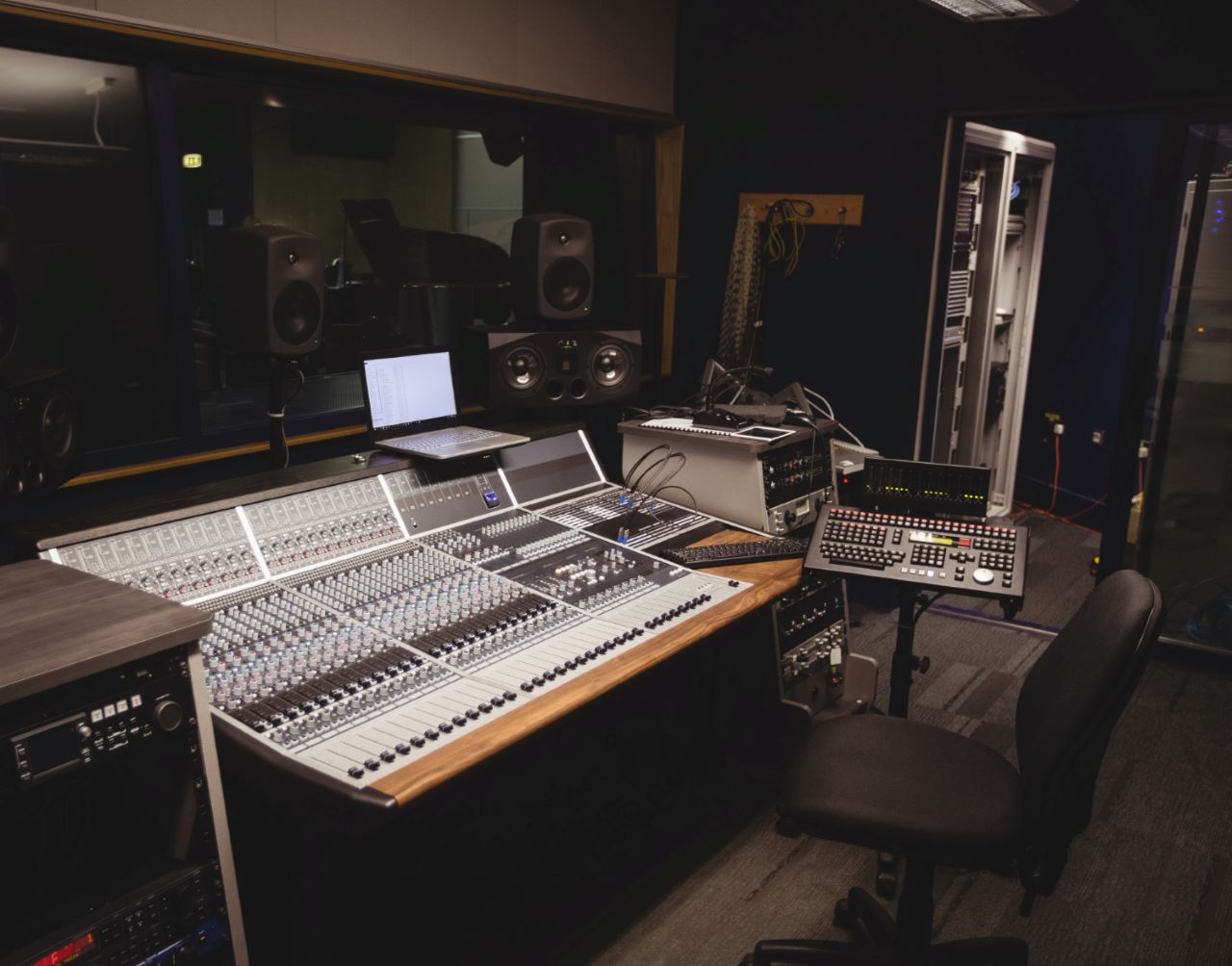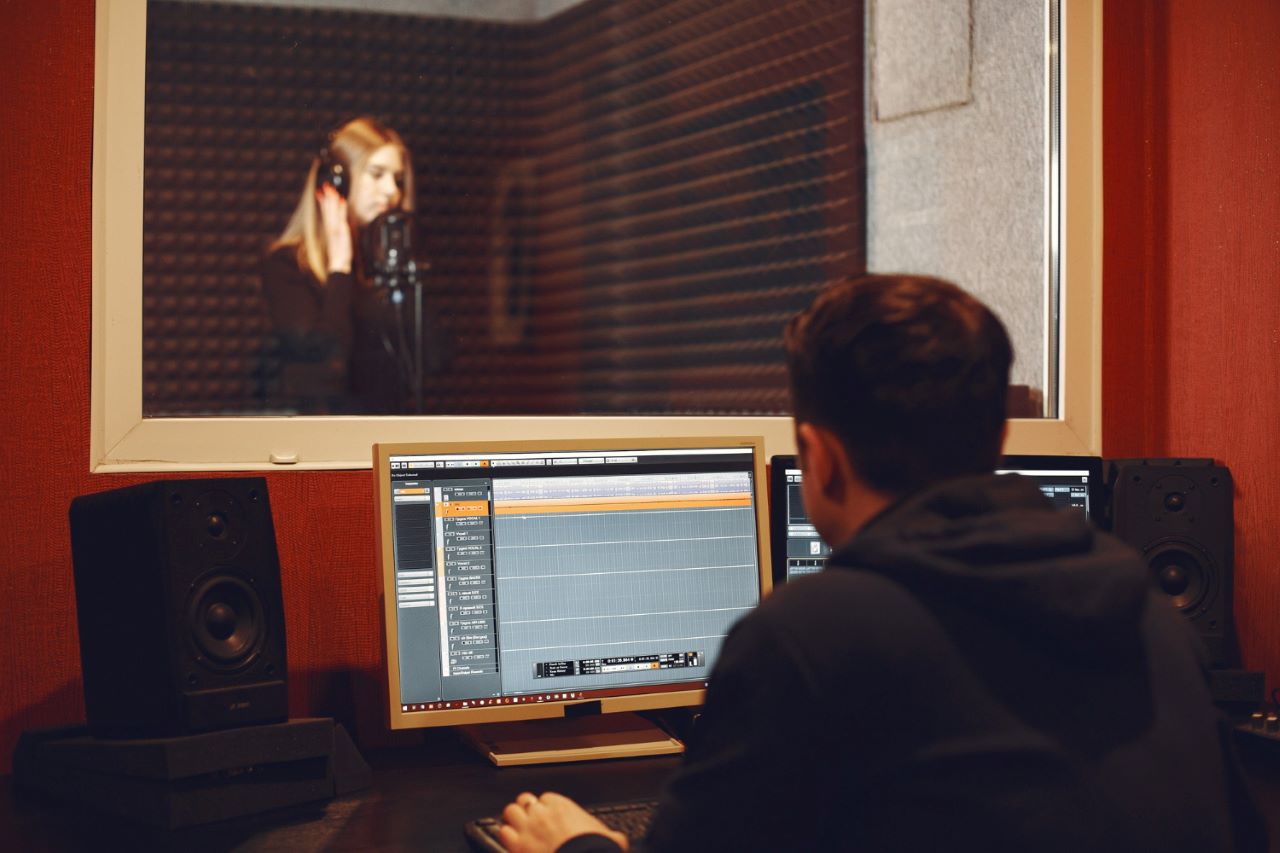Step into the world of music production and podcasting, where every element, no matter how small, plays a crucial role in creating the perfect sound. One such element, often overlooked yet vital, is the recording studio glass. It’s not just a transparent barrier; it’s the heart of sound clarity and artist-producer collaboration. This article delves into the essence of recording studio glass, unveiling its critical function in the acoustic alchemy of music production.
Behind every soul-stirring melody and foot-tapping rhythm is the silent efficacy of recording studio glass. Far from being just another component, it represents the fine line between sound clarity and isolation. Here, we unpack the layers of this specialized glass, exploring how it becomes the linchpin in capturing pristine sound quality in a studio setting.
Contents
The Role Of Studio Glass In Sound Isolation
In a recording studio, sound isolation is paramount. The glass used in these studios is engineered to prevent sound leakage, ensuring that the recording environment remains pristine and undisturbed by external noises. But how does it achieve this feat? The answer lies in its unique construction.
Typically, recording studio windows consist of multiple layers, each contributing to its sound-dampening capabilities. These layers are often of varying thicknesses, a design choice that disrupts sound waves and minimizes their transmission. This layered approach, combined with air gaps between the panes, creates a barrier that effectively isolates sound.
The Aesthetic And Functional Balance

Image by wavebreakmedia_micro on Freepik
While the primary function of studio glass is sound isolation, aesthetics also play a vital role. Visibility between the control room and the recording area is crucial for visual communication. Artists and producers rely on visual cues for coordination, making clear, unobstructed views essential.
The challenge, then, is to balance sound isolation with transparency. Recording studio glass strikes this balance by being both functional and visually appealing. The glass is often designed to fit seamlessly into the studio’s architecture, enhancing the overall aesthetic while serving its critical acoustic purpose.
Types Of Recording Studio Glass
In the intricate world of recording studios, the choice of glass plays a pivotal role in achieving acoustic perfection. Different types of studio glass cater to various needs, from basic soundproofing to advanced vibration control. Let’s explore these types in detail, understanding their unique properties and applications.
Laminated Glass
Laminated studio glass is a popular choice, known for its soundproofing capabilities. It embodies two or more glass laminations bonded together with a special interlayer, generally constructed with polyvinyl butyral (PVB). This interlayer acts as a dampener, absorbing sound vibrations and reducing noise transmission. Laminated glass is highly effective at blocking higher-frequency sounds, making it ideal for studios located in busy urban areas.
Technical aspects
- Thickness: Such recording sound studio windows typically range from 6.5 mm to 10.5 mm.
- Sound Transmission Class (STC) rating: Usually falls between 35 and 45, indicating good sound reduction capabilities.
- Benefits: Besides soundproofing, this studio window offers safety features, as the interlayer holds the glass in place upon impact, reducing injury risk.
Acoustic Glass
Acoustic glass takes sound insulation a step further. It is specially engineered to provide superior sound isolation, particularly in environments where even the slightest sound leakage is unacceptable. This type of glass often incorporates multiple layers with varied densities to disrupt sound waves more effectively.
Technical aspects
- Composition: This offsetting acoustical window may include asymmetrical pane thicknesses and different types of glass in one unit.
- STC rating: Such home recording studio windows can go up to 50 or higher, signifying excellent sound insulation.
- Benefits: Offers enhanced clarity for both low and high-frequency sounds, making it ideal for high-end recording studios and mastering rooms.
Tempered Glass
Tempered glass, while not exclusively designed for soundproofing, is often used in studios for its durability and safety. When broken, it shatters into small, granular chunks instead of jagged shards, making it a safer option. While its acoustic properties are not as advanced as laminated or acoustic glass, it can be a cost-effective solution for less demanding studio environments.
Technical aspects
- Thickness: Generally thicker than standard glass, around 6 mm and above.
- Safety: Meets rigorous safety standards, breaking into small, safer pieces.
- Benefits: Provides moderate sound insulation and is more resistant to physical impact.
Double-Glazed Glass

Image by prostooleh on Freepik
Double-glazed glass consists of two glass panes separated by an air or inert gas-filled space. This gap serves as an additional barrier to sound, making it effective for sound insulation. It’s a common choice for studios that require a balance between soundproofing, thermal insulation, and budget considerations.
Technical aspects
- Gap width: Typically ranges from 6 mm to 20 mm.
- STC rating: Varies based on the gap width and glass thickness but generally offers good sound reduction.
- Benefits: Provides sound and thermal insulation, making it suitable for studios in variable climates.
Triple-Glazed Glass
Triple-glazed glass, similar to double-glazed glass, features three layers of glass with two air- or gas-filled spaces. This type offers even better sound insulation and is used in studios where utmost sound isolation is necessary.
Technical aspects
- Construction: Three layers of glass with two insulating gaps.
- STC rating: Higher than double-glazed glass, offering superior sound insulation.
- Benefits: Excellent for studios in noisy environments and provides additional thermal benefits.
Each type of recording studio glass serves a unique purpose, catering to different acoustic requirements and budget constraints. From laminated glass’s high-frequency sound blocking to the superior insulation of triple-glazed glass, studios can choose the type that best fits their specific needs, ensuring that every note and beat is captured with crystal-clear precision.
Conclusion
In the realm of music production, the role of recording studio glass is as crucial as it is nuanced. From laminate to triple-glazed, each type of glass brings its own set of technical strengths, addressing specific sound isolation needs. Whether it’s blocking out the bustling noise of the city with laminated glass or achieving the utmost sound purity with acoustic glass, these materials are integral to the art of sound recording.
The choice of studio glass for your recording studio window impacts not only the acoustic quality but also the aesthetic and safety aspects of the recording environment. In essence, recording studio glass is not merely a barrier; it’s a carefully engineered component that harmonizes clarity, safety, and visual appeal, making it a key player in the recording studio soundproofing and symphony of studio design.
As we close this exploration, remember that the next time you enjoy a crystal-clear recording, there’s more than just musical talent at play – there’s the silent yet significant contribution of studio glass, shaping the sounds that touch our lives.
Related: DIY Sound Booth For Podcast